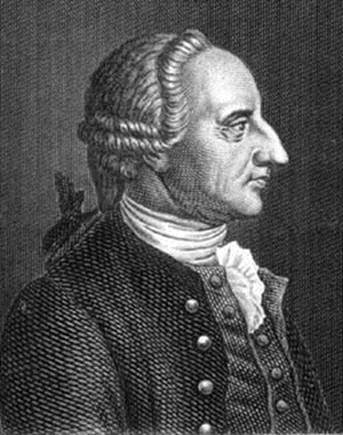


 تاريخ الرياضيات
تاريخ الرياضيات
 الرياضيات في الحضارات المختلفة
الرياضيات في الحضارات المختلفة 
 الرياضيات المتقطعة
الرياضيات المتقطعة
 الجبر
الجبر
 الهندسة
الهندسة 
 المعادلات التفاضلية و التكاملية
المعادلات التفاضلية و التكاملية 
 التحليل
التحليل
 علماء الرياضيات
علماء الرياضيات |
Read More
Date: 21-3-2016
Date: 21-3-2016
Date: 27-3-2016
|
Born: 27 September 1719 in Leipzig, Germany
Died: 20 June 1800 in Göttingen, Germany

Abraham Gotthelf Kästner's father was a university professor of jurisprudence. He hoped that his son would follow in his footsteps and Kästner started out on a university course with the intention of studying the philosophy of law, but he soon found other topics more to his liking and began to concentrate more on philosophy, physics and mathematics.
Kästner wrote his habilitation thesis at the University of Leipzig, and was awarded the qualification which allowed him to teach there in 1739. He taught at the University of Leipzig as a Privatdozent until 1746 when he was appointed as an extraordinary professor. Ten years later, in 1756, he was appointed as professor of mathematics and physics at Göttingen where he succeeded to Segner's chair. He was an excellent expositor of mathematics although it is reported that Gauss did not bother to go to his lectures as he found them too elementary. However he did influence Gauss, in particular with his interest in Euclid's parallel postulate.
The paper [5] examines the contribution of Kästner who Sinaceur describes as an important German mathematician of the mid- and late 18th century. Kästner is not famed for original research but rather he was involved in compiling encyclopedias and in writing textbooks. He was concerned with philosophical questions in mathematics and other areas such as logic. However Kästner was quite unenthusiastic about logic, but this is not surprising for a mathematician of this period who was interested in geometry. Despite this he was interested in the philosophy of mathematics and he wrote widely, in long volumes, about theapplications of mathematics to optics, dynamics and astronomy.
Perhaps his two most famous works, both in four volumes, were Mathematische Anfangsgründe and Geschichte der Mathematik (1796-1800). This latter work was intended to form the basis for a history of mathematics. For example Volume 2, published in 1787, is considered one of the standard sources on the history of mathematical optics.
Perhaps the most important feature of Kästner's contributions was his interest in the parallel postulate which indirectly influenced Bolyai and Lobachevsky too. Kästner taught Bolyai's father and J M C Bartels, one of Kästner's students, taught Lobachevsky. Folta writes in [3] about Kästner's work on geometry:-
Kästner [is] among the mathematicians of the 18th century whose broad interests compelled [him] to concern [himself] with the principal problems of geometry. [His] results included new features that more precisely formulated the traditional interpretation of elementary geometry. In fact, [he] began the conscious attempt to make a precise axiomatisation of the fundamental concepts. Kästner, in spite of his rather great inclination for Euclid's Elements, based his version of the axiomatics of geometry in his Kompendium on other principles (e.g., on motions) and attempted both to seize on other fundamental properties (continuity, ordering) and to determine the selection of the parallel axiom as a foundation.
The article [1] gives us a few more details of Kästner's life, which is described in detail in [2] which is an autobiography. Goe writes in [1]:-
Kästner is also known in German literature, notably for his epigrams. He was a devout Lutheran. Kästner married twice and had a daughter by his second wife.
Books:
Articles:



|
|
|
|
تفوقت في الاختبار على الجميع.. فاكهة "خارقة" في عالم التغذية
|
|
|
|
|
|
|
أمين عام أوبك: النفط الخام والغاز الطبيعي "هبة من الله"
|
|
|
|
|
|
|
قسم شؤون المعارف ينظم دورة عن آليات عمل الفهارس الفنية للموسوعات والكتب لملاكاته
|
|
|